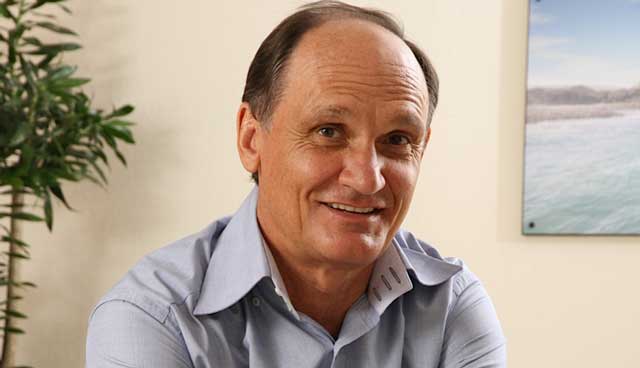
Cell C CEO Alan Knott-Craig has cautiously welcomed the proposed cuts in wholesale call termination rates, announced by telecommunications regulator Icasa on Friday, saying that although he’d have “wished for a better outcome for Cell C”, the cuts will lead to a “more competitive and balanced” market.
The cuts in the fees, which operators charge each other to carry calls between their networks, are expected to lead to further reductions in retail call costs for consumers after the new rates take effect from 1 March 2014. They are in draft form and may still change pending input from industry players — they are likely to face stiff opposition from MTN and Vodacom.
In the draft regulations, Icasa has proposed introducing aggressive “asymmetry”, or wholesale price benefits, in call termination in a move that strongly disfavours MTN and Vodacom but which will give a boost to both Cell C and Telkom Mobile.
Icasa wants mobile termination rates to drop by 50% next March, from 40c/minute now to just 20c/minute. The rate will then fall by a further 5c/minute in 2015 and 5c/minute in 2016, to reach 10c/minute.
Under the draft regulations, Cell C and Telkom Mobile will enjoy asymmetry, as defined in the regulations, for a period of five years from 2014, even if their market share rises above 20%. Cell C’s market share is about 17%; Telkom Mobile’s is in the region of 1% to 2%.
In 2014, the smaller operators will enjoy asymmetry of 95%, or 39c/minute, compared to the general rate of 20c/minute. That’s an increase from a 10% asymmetry advantage now and means that, from March, Vodacom and MTN will have to pay Cell C 39c/minute for calls to the smaller operator’s network, while Cell C will pay just 20c/minute for calls in the other direction.
Asymmetry benefits apply to any operator with less than 20% market share and will expire in 2019. The asymmetry rate will fall to 33c/minute in 2015, 26c in 2016, 20c in 2017, 14c in 2018 and reach parity with the general rate of 10c in 2019. Thereafter, any company with less than 10% market share will enjoy a rate of 14c/minute, or a 40% price benefit, until such time as they have more than 10% of the market.
“It is really encouraging to see Icasa work quickly and efficiently, favouring neither friend nor foe,” says Knott-Craig.
“Although in actual terms (cents) the asymmetry is lower than what was hoped for, Icasa has been smart in providing asymmetry over a longer period with a relatively gentle glide path,” he adds.
“On the other hand it has blasted the way open by drastically reducing the single largest cost factor in prices, namely the mobile termination rate which both Vodacom and MTN enjoy, noting that today these two operators control more than 90% of the mobile market revenue. Icasa has got that spot on.
“Of all the players, Telkom wins hands down. And I do not begrudge them that,” Knott-Craig says. “They have played a major role in establishing the current healthy mobile industry. While my first instinct is to challenge Icasa, they have had to tread a fine line between under-reacting and over-reacting, and they have cleverly done what they needed to do to make it possible for the telecoms market in South Africa to gain a semblance of normality.
“I would have wished for a better outcome for Cell C, but individual interests aside, the market will be a more competitive and balanced one with Icasa’s proposed draft regulations on termination rates.”
But, says Knott-Craig, the draft regulations are only the “first regulatory step in normalising the South African telecoms space”.
“There is much more to come, and the competition is going to be fierce,” he says. “Cell C needs more market share, and we will only gain that through aggressive pricing and good network quality.”
Other operators are less keen to comment on the Icasa plan.
A Vodacom spokesman says only: “We are studying the proposed changes and will comment in due course.”
However, in Vodacom’s 2013 annual report, chairman Peter Moyo says: “Mobile termination rates have also been used by regulators to increase competition in the sector. Vodacom has been supportive of the reduction in the rates over the past three years and continues to work with Icasa on extending the downward glide path. The question is whether asymmetry, if granted, would be counterproductive and reduce the propensity to invest in networks. Asymmetry is typically applied to give new players a temporary boost, allowing them to become established. Once up and running, normal competitive rules resume.”
Says Moyo in clear reference to Cell C: “Asymmetry effectively means that the incumbent operators subsidise the new operator, which only makes sense in that early phase. We have a situation in South Africa where networks have been in operation for over 10 years and we believe that these companies’ shareholders, rather than our customers, should pay for their network investment.”
Telkom, meanwhile, says the current termination rates are “prejudicial” to the company and it “welcomes the review” of the regulations.
Acting chief corporate service officer at MTN South Africa Fusi Mokeoena says his company will” closely examine the contents of the proposed regulations and analyse the potential regulatory and economic impact. Once MTN has reviewed the document, it will compile its response and file the required submission on the due date.” — (c) 2013 NewsCentral Media
- See also: Cell C handed call rates victory




